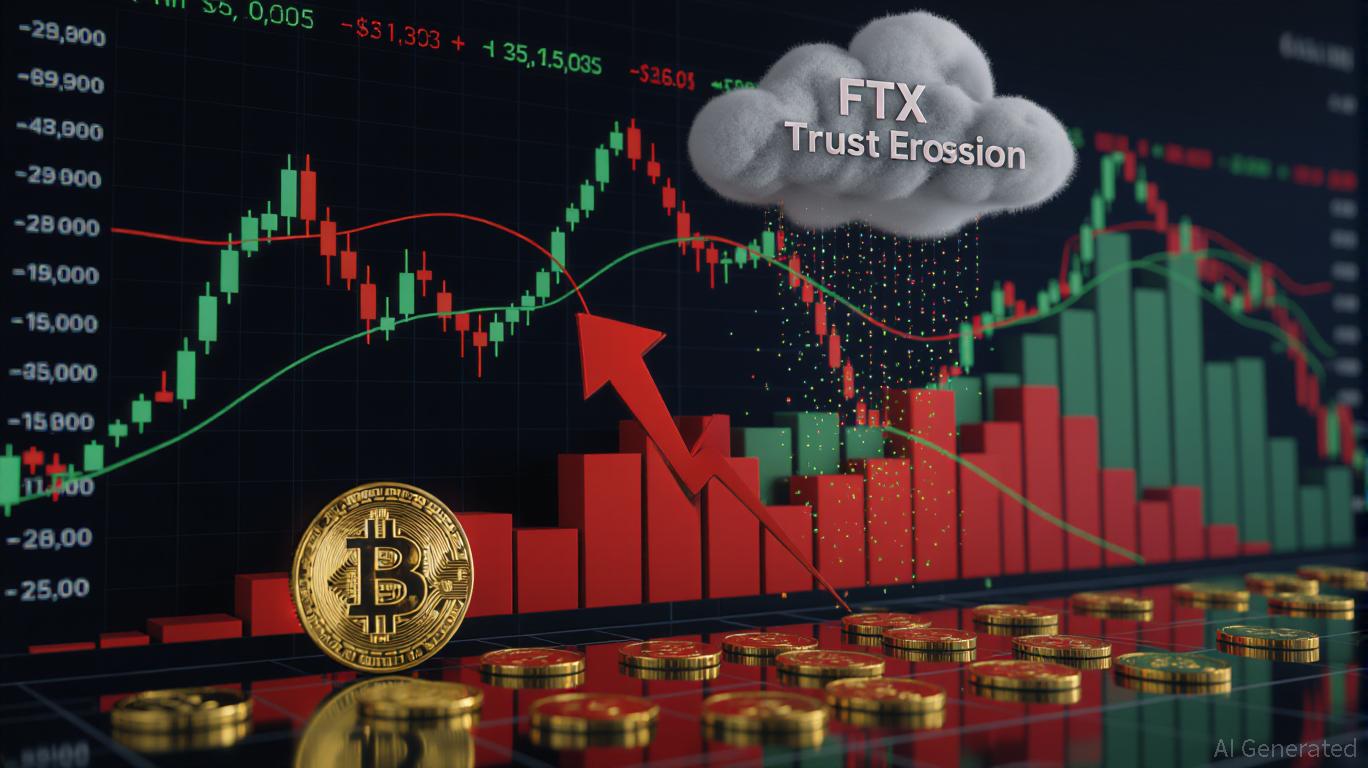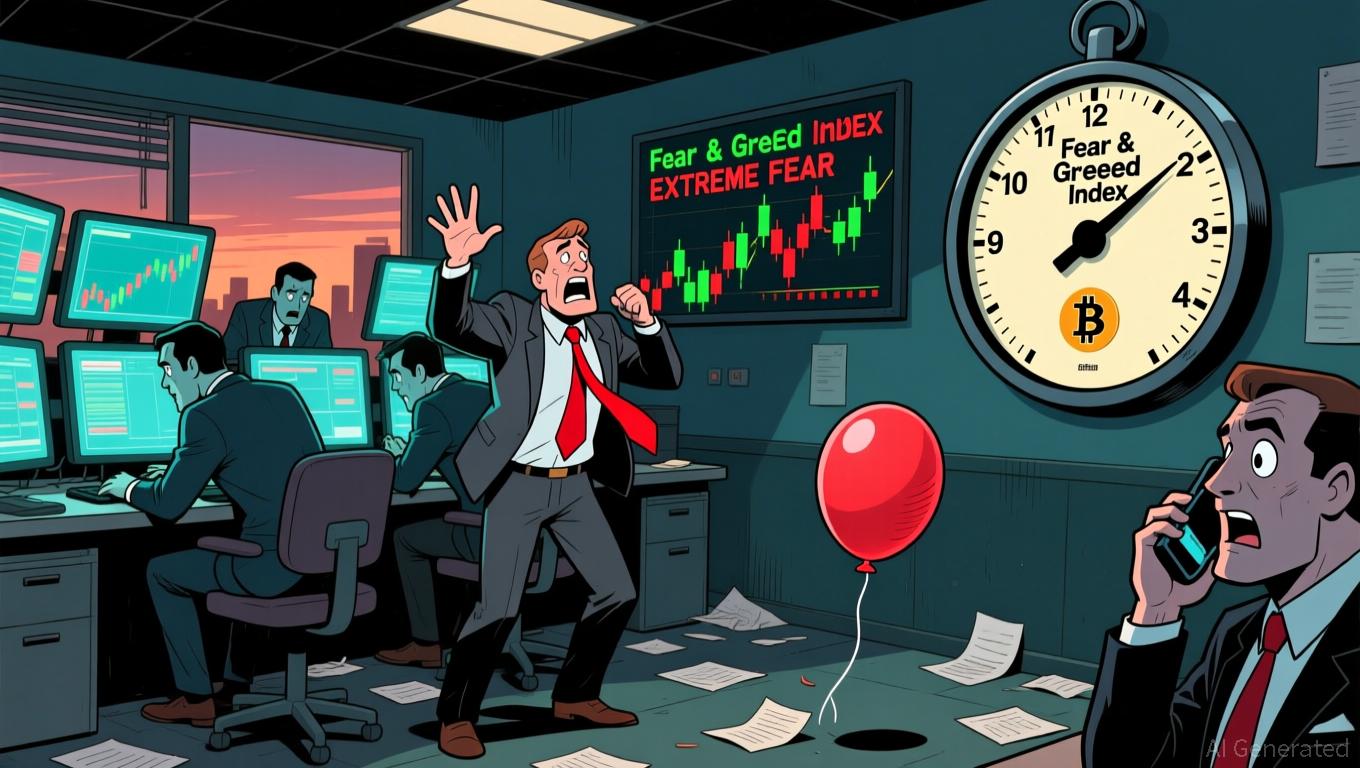The Unexpected Bitcoin Plunge in November 2025: Causes Behind the Drop and Future Prospects for Cryptocurrency Investors
- The November 2025 BTC crash resulted from Fed tightening, lingering FTX trust erosion, and institutional outflows. - Fed's hawkish liquidity controls and inflation focus created toxic conditions for Bitcoin's low-rate-dependent market. - FTX's unresolved $7.1B payouts and $20B institutional exodus since 2022 amplified panic selling through trust deficits. - Crypto investors must now wait for Fed policy clarity and prioritize transparent platforms with regulatory compliance.
The Fed’s Hawkish Posture: The Unseen Driver
In November 2025, the Federal Reserve’s moves, while not directly raising rates, indicated a preference for tighter policy that unsettled riskier assets.
Even though no rate increase was announced in November, the Fed’s emphasis on liquidity management and rate oversight sent a strong signal: monetary tightening was not over. For Bitcoin, which generally benefits from low interest rates, this hawkish approach created a challenging environment. As expectations of higher borrowing costs grew, risk aversion intensified, leading to a rapid sell-off in BTC.
FTX’s Lingering Trust Deficit: An Ongoing Burden
Three years after the FTX collapse, the crypto sector still faces a significant trust gap. Despite efforts to increase transparency and implement proof-of-reserves, FTX creditors have yet to be fully repaid.
The psychological scars from FTX’s downfall remain deep. Even as the market recovered, many institutions chose to withdraw from centralized exchanges altogether, moving assets to self-custody or converting to fiat.

Institutional Withdrawals: The Tipping Point
The November downturn was further intensified by a surge in institutional withdrawals. While precise data for 2025 is still being compiled, trends from 2022 show that declining trust and economic stress often prompt large-scale redemptions. With the Fed signaling more tightening and the FTX fallout unresolved, institutions began reducing their crypto holdings to safeguard assets. This move toward safety, combined with diminished liquidity post-FTX, triggered a downward spiral.
What Lies Ahead for Crypto Investors?
For those managing risk in crypto, moving forward will require both patience and vigilance. Consider these strategies for the next stage:
- Await Clear Signals from the Fed: The Federal Reserve’s meeting in December 2025 will be crucial.
Should the central bank indicate a pause in tightening, Bitcoin may find support. Investors should keep an eye on the repo facility’s performance and overall liquidity conditions.
- Monitor Efforts to Restore Trust: Platforms that consistently provide transparency—such as real-time proof-of-reserves audits—will become more attractive.
Steer clear of exchanges with unresolved financial obligations.
- Broaden Portfolio Exposure: Consider allocating funds to crypto assets with solid fundamentals and clear regulatory standing, like Bitcoin ETFs or high-quality stablecoins.
Conclusion
The Bitcoin crash in November 2025 was the result of both tightening global monetary policy and persistent structural weaknesses in crypto. While the Fed’s hawkish stance and the lingering effects of FTX were immediate triggers, the broader takeaway is that crypto markets are now deeply intertwined with global economic trends. For investors, the challenge is to balance hope with caution—waiting for a shift in Fed policy and for the crypto industry to rebuild its foundation of trust.
Disclaimer: The content of this article solely reflects the author's opinion and does not represent the platform in any capacity. This article is not intended to serve as a reference for making investment decisions.
You may also like
Bitcoin News Update: Crypto Market Finds "Fertile Ground" Post-Drop as Buyers Take in Capitulation Sales
- Bitcoin fell below $95,000 in late November 2025, triggering panic as the Fear & Greed Index hit a nine-month low of 10. - Waning institutional demand, macroeconomic uncertainty, and $600M in forced liquidations accelerated the selloff, with spot ETFs losing $1.1B in outflows. - XWIN Research warned the correction could persist until mid-2026 if key $92,000–$94,000 support levels fail, while 96 of top 100 cryptos declined. - Political tensions emerged after Trump pardoned Binance's Zhao, who received a $

Bitcoin News Update: "Institutions' Confidence or Meme Frenzy: Crypto Faces the $110,000 Turning Point"
- Bitcoin rebounds from $100k lows amid U.S. government reopening, with analysts eyeing $110k as potential target driven by regulatory clarity and ETF optimism. - MoonBull ($MOBU) emerges as high-risk speculative play, projecting 7,244% ROI through Ethereum-based tokenomics including liquidity locks and 2% holder reflections. - Market duality highlighted by institutional-grade BTC consolidation vs. community-driven meme tokens, with $MOBU's 23-stage presale raising $600k and 1,900+ holders. - Technical ind

Ethereum News Update: Ethereum’s Unsteady Recovery: Weighing Optimism Against Ongoing Downward Pressures
- Ethereum rose 2.36% to $3,533 on Nov 13, 2025, with $37B trading volume, showing a rebound from $3,373 lows amid crypto market volatility. - Technical analysis warns of fragile recovery, with key support at $3,053 holding but bearish signals from MACD and a broken upward channel. - Broader crypto pressure persists as Bitcoin and Ethereum ETFs face outflows, while macroeconomic uncertainties like U.S. government shutdown risks dampen institutional participation. - Analysts advise caution below the 200-day

Uniswap News Today: Uniswap's UNIfication Launches a New Era of DeFi Leadership for the Next Decade
- Uniswap's UNIfication proposal introduces protocol fees, token burns, and buybacks to transform UNI into a deflationary asset. - The plan drives UNI's 63% weekly price surge and allocates 0.3% trading volume to liquidity providers and buybacks. - Whale accumulation and $38M/month buyback projections signal strong market confidence in Uniswap's governance overhaul. - The proposal unifies Uniswap's ecosystem, introduces fee discounts, and launches CCA for institutional-grade liquidity infrastructure. - DeF
